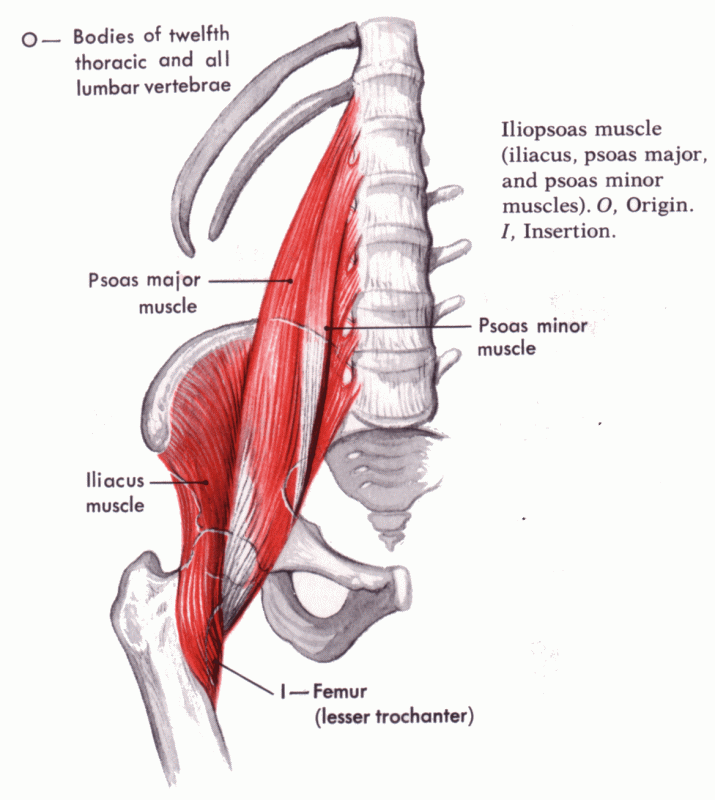Educational Info: The Psoas Muscle
“The Psoas is the tenderloin (filet mignon) of the human body. Juicy, supple, and dynamic, the Psoas is the primal messenger of the central nervous system. Your Psoas is much more than simply a muscle, it can be perceived as the guardian or spokesperson of Dan Tien, Hara, or what is commonly referred to as your gut intuition. In some spiritual philosophies, the Psoas is referred to as the muscle of the soul.” ~ Liz Koch (Core Awareness)

Recently in class I have been talking about the Psoas Muscle and some of you also got the opportunity to partner up and find exactly where this muscle is.
I have been learning about the Psoas muscle as part of my latest Rock Star Teacher Training with Sadie Nardini (a fierce Brooklynite', life stylist, ultimate wellness expert, & founder of Core Strength Vinyasa Yoga).
In Core Strength Vinyasa Yoga (CSVY), the ... ‘focus is on the student’s process of drawing inward to seek, and find, their inner ‘core’ strength on every level. The poses are designed to release tension from the outer superficial body, and re-activate the inner body muscles to support the spine and joints from the inside out, instead of pressurizing them from the outside in. This deep Core Line activation makes the poses stronger, yet lighter, since we are not gripping the poses with the outer body, which makes the poses too heavy, and weights the joints and spine,” reports Sadie.
So after learning to find our ‘foundation’ (rooting down with whatever is on the ground) we then need to gather ourselves in and up to activate the ‘core’. A muscle needed for this is the Psoas muscle.
So what is the Psoas muscle?
The Psoas muscle (pronounced so-as) is the deepest muscle of the human body affecting our structural balance, muscular integrity, flexibility, strength, range of motion, joint mobility, and organ functioning.1.
On each side of the spine the psoas attaches to the side and toward the front of the 12th thoracic vertebra and each of the lumbar vertebra. Moving through the pelvis without attaching to bone, the psoas inserts along with the iliacus muscle in a common tendon at the top of the femur. 2.
It is also the only muscle that attaches your leg to your spine, and is one of the longest muscles in the body. It can be thought of as the bridge from the upper body to the lower body, and in your yoga practice as the bridge from your ‘foundation’ to your ‘core’.
In yoga, the psoas plays an important role in every asana. In backbends, a released psoas allows the front of the thighs to lengthen and the leg to move independently from the pelvis. In standing poses and forward bends, the thighs can't fully rotate outward unless the psoas releases. All yoga poses are enhanced by a released rather than shortened psoas. (When you reverse your orientation to gravity in inversions, however, the psoas must be toned as well as released to maintain proper spinal stability. 3.
The psoas however, is far more than a core stabilizing muscle; it is an organ of perception composed of bio-intelligent tissue and literally embodies our deepest urge for survival, and more profoundly, our elemental desire to flourish. 4.
It’s action is fear based, if we get fearful we kick into survival mode and have the urge to flee on foot, or when stressed we may want to curl up in foetal position; both requiring the action of the psoas. It is believed we store a lot of trauma in this muscle and it can manifest as lower back issues.
Your psoas can be a tricky one to sense, but by improving your awareness of this crucial muscle you can greatly enhance your physical and emotional health. To find out more about this amazing muscle check out the links below.
1. The Psoas: Muscle of The Soul by Danielle Prohom Olson
2. Yoga Journal Article by Liz Koch
3. Yoga Journal Article by Liz Koch
4. The Psoas: Muscle of The Soul by Danielle Prohom Olson




